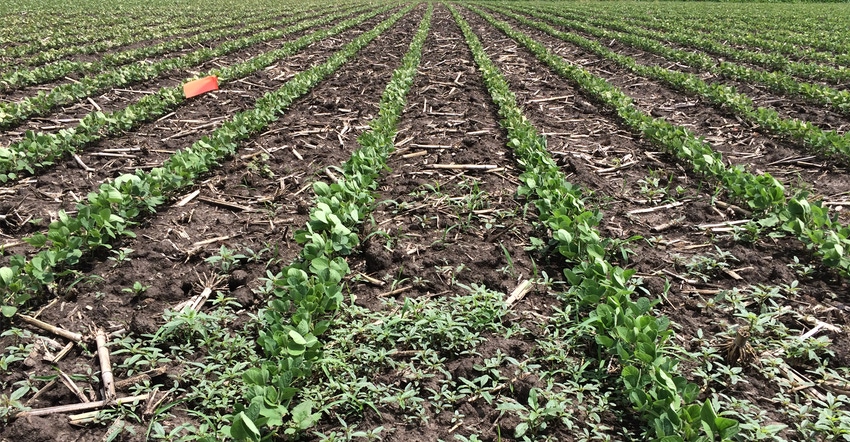May 21, 2020

Cool, dry conditions across much of Iowa this spring may have led to reduced weed control from early-season herbicide applications. Unseasonably cool temperatures can inhibit or slow herbicide uptake by emerged weeds, which may reduce the effectiveness of burndown herbicides.
Meanwhile, preplant and preemergent herbicides require adequate soil moisture to be effective against labeled weed species. As the opportunity for postemergent herbicide applications approaches, now’s the time to begin evaluating corn and soybean fields for weed escapes.
“You want the crop and weeds actively growing when you spray herbicide,” says Paul Parcher, Channel technical agronomist in northeast Iowa. “In warmer weather, herbicides will more effectively kill weeds, and the crop can better metabolize the active ingredients.”
Weeds compete with crops for the building blocks of yield — water, nutrients and light. If weeds aren’t controlled from the very beginning, yield potential can be capped. Keeping an eye out for weeds may be the best defense in preserving yield potential, and the last best chance to control weeds is during the seedling stage of corn and soybean growth.
“Field evaluations at the seedling stage can really pay off because there is still time for farmers to address any issues found in their fields,” says Matt Nelson, Channel agronomist in southwest Iowa. “Having a second set of eyes in the field can be key in effective weed management.”
Correct identification
The crucial first step for postemergence weed control is knowing which species are present in your field, Nelson says. Farmers can rely on their agronomist or crop consultant to check weed populations and assess plant health and stand establishment while making sure yield expectations are on track. And tools such as the Climate FieldView platform provide a closer look at the field during the seedling stage visit.
“If there are areas of dark green on a FieldView field image, that tells me I need to check that part of the field for weeds,” Nelson says. Because weed pressure is variable, Nelson and Parcher encourage farmers to manage weed species field by field as opposed to applying a blanket herbicide control program.
Once weeds are identified, select the chemistries that will control the specific species found in your fields and plan to apply herbicide during the appropriate time frame, Nelson advises. Be sure to check your records to confirm which herbicides were previously applied and rotate to different chemistries with multiple modes and sites of action to help slow the evolution of herbicide resistance. Crops benefit the most when weeds are controlled as early in the season as possible before weed height exceeds 4 inches.
Evaluate each field
“Field evaluations are important because they can give farmers a true understanding of the weed species in their fields — and that’s empowering,” Nelson says. “Farmers are then better equipped to make decisions about weed management and stewardship practices.”
Waterhemp can be a real challenge in Iowa fields. To control waterhemp, agronomists are advising farmers to select herbicide programs that include multiple sites of action and to use a layered residual approach to extend the duration of weed control. “The longer current herbicide chemistries with activity against waterhemp remain effective, the better off we will be,” Parcher says.
To learn more, visit Channel’s Seedling Stage Field Check Up series.
About the Author(s)
You May Also Like






